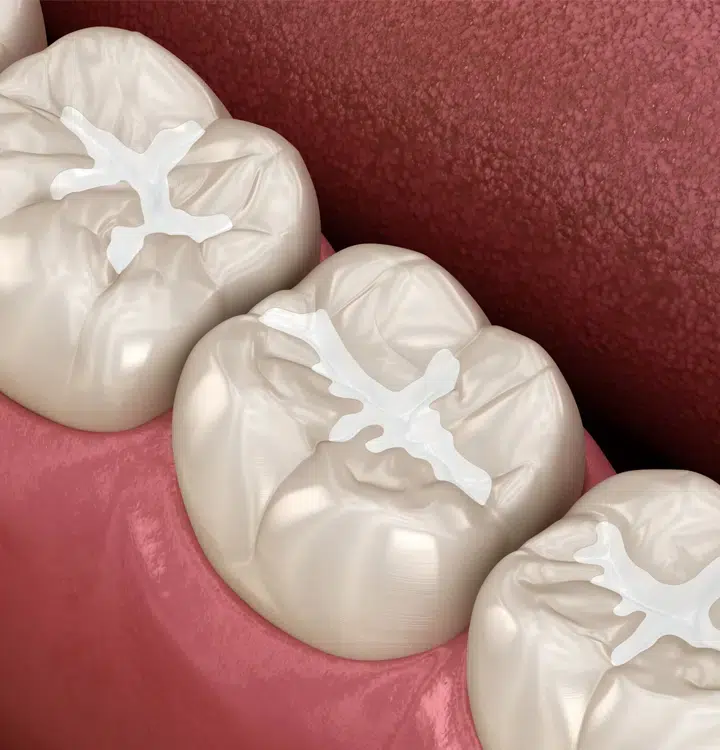
Understanding Tooth-colored Fillings
Tooth decay and cavities are prevalent dental issues that can escalate if left unaddressed. Opting for tooth-colored fillings can effectively restore teeth and prevent minor decay from progressing into more severe conditions.
Despite maintaining good oral hygiene and regular dental cleanings, tooth decay can still penetrate tooth enamel. Thankfully, the treatment for cavities typically involves tooth fillings, a routine dental procedure. At our practice, we utilize tooth-colored composite fillings as an alternative to traditional amalgam fillings, which contain metal and mercury. Our metal-free fillings seamlessly blend with your natural tooth color, ensuring they harmonize with your smile effortlessly.
Utilizing Dental Cleanings To Prevent Cavities
How Do Dental Fillings For Cavities Work?
What Types Of Fillings Are There?
Is Tooth Sensitivity After A Filling Normal?
Following a filling procedure, the area surrounding the affected tooth is typically numbed to minimize discomfort. It's normal not to feel any sensations for an hour or two after your appointment. However, once the numbing wears off, it's common to experience pain in your teeth and gums.
You may notice heightened sensitivity when consuming hot or cold foods and beverages, and it's not uncommon to feel increased discomfort or sensitivity when brushing or flossing near the treated tooth. These sensations are typical reactions as your mouth adjusts to the restoration process.
You can reduce the sensitivity in your teeth and gums by:
- Take an anti-inflammatory medication containing ibuprofen.
- Rinse your mouth with a solution of warm water mixed with 1/2 to 3/4 teaspoon of salt to reduce inflammation.
- Temporarily avoid consuming hot, cold, or acidic foods and beverages.
- Brush and floss your teeth gently to avoid aggravating sensitivity.
- Consider using a desensitizing toothpaste such as Sensodyne or Colgate Sensitive to help alleviate discomfort.



